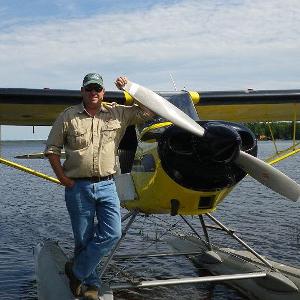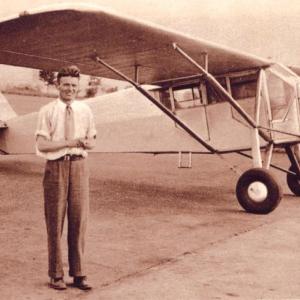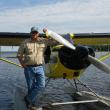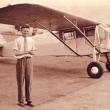Dream of flying is within grasp at Penobscot Island Air
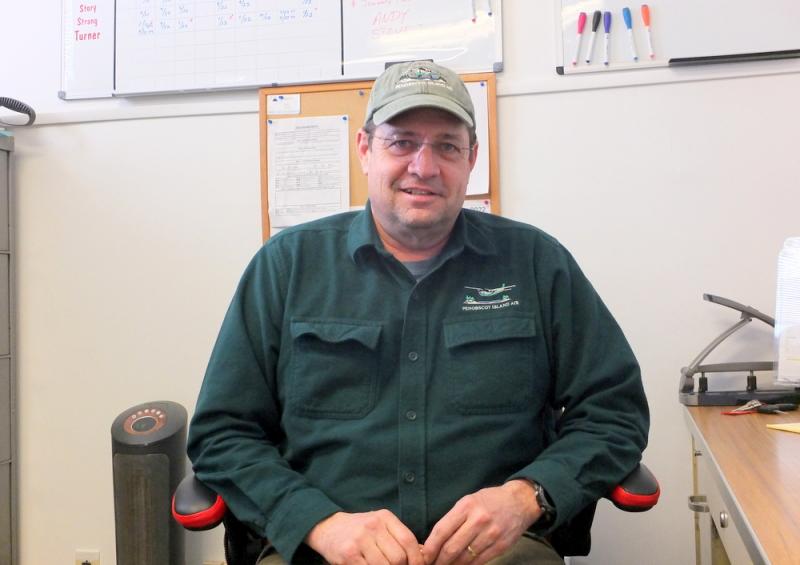 Penobscot Island Air, Chief Pilot, Scott Story. (Photo by Chris Wolf)
Penobscot Island Air, Chief Pilot, Scott Story. (Photo by Chris Wolf)
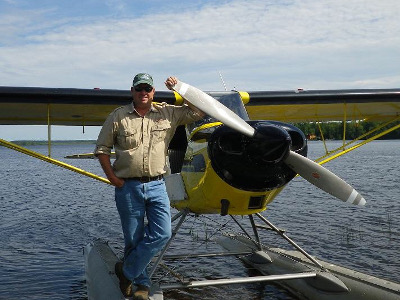 Scott Story with a floatplane. (Photo courtesy of Penobscot Air)
Scott Story with a floatplane. (Photo courtesy of Penobscot Air)
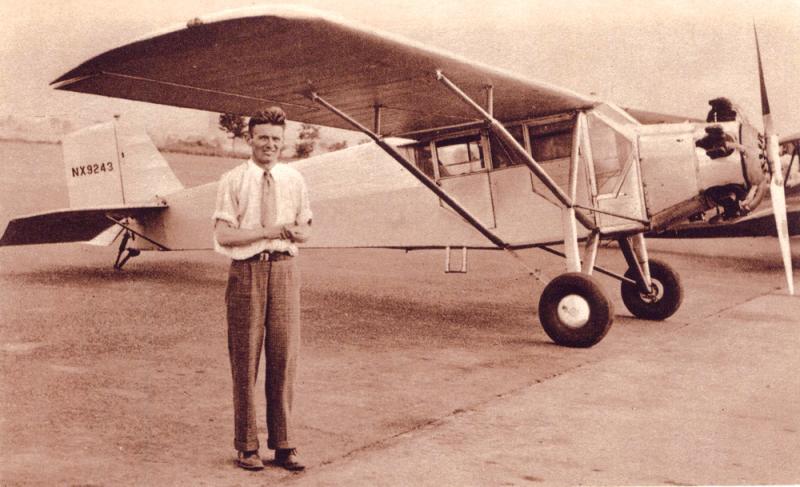 Douglas “Wrong Way” Corrigan. (Photo courtesy of Myles Dungan). https://mylesdungan.com/2015/07/17/on-this-day-17-7-1938-douglas-wrong-way-corrigan-lands-at-baldonnell-aerodrome-after-flying-the-atlantic/
Douglas “Wrong Way” Corrigan. (Photo courtesy of Myles Dungan). https://mylesdungan.com/2015/07/17/on-this-day-17-7-1938-douglas-wrong-way-corrigan-lands-at-baldonnell-aerodrome-after-flying-the-atlantic/
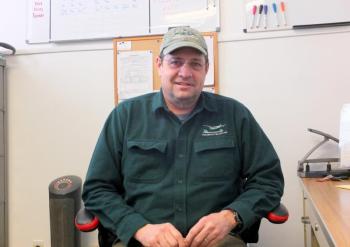 Penobscot Island Air, Chief Pilot, Scott Story. (Photo by Chris Wolf)
Penobscot Island Air, Chief Pilot, Scott Story. (Photo by Chris Wolf)
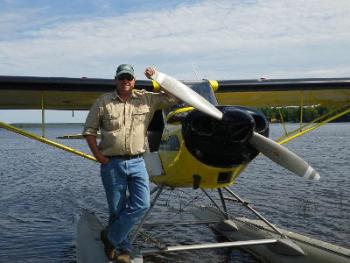 Scott Story with a floatplane. (Photo courtesy of Penobscot Air)
Scott Story with a floatplane. (Photo courtesy of Penobscot Air)
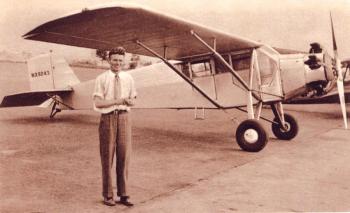 Douglas “Wrong Way” Corrigan. (Photo courtesy of Myles Dungan). https://mylesdungan.com/2015/07/17/on-this-day-17-7-1938-douglas-wrong-way-corrigan-lands-at-baldonnell-aerodrome-after-flying-the-atlantic/
Douglas “Wrong Way” Corrigan. (Photo courtesy of Myles Dungan). https://mylesdungan.com/2015/07/17/on-this-day-17-7-1938-douglas-wrong-way-corrigan-lands-at-baldonnell-aerodrome-after-flying-the-atlantic/
OWLS HEAD — There isn’t one of us who, on a sunny day, hasn’t heard the soft purr of an engine overhead and looked up to watch an airplane gently floating by. The dream of flying. Everyone has it.
If you live on the Midcoast that dream is now in your grasp as Penobscot Island Air, at the Knox County Regional Airport in Owls Head, has started a full-time flight school where you can get your private pilot's license and instrument certification.
And the best news is, you can do it at your own pace.
PIA operates from a private terminal at the airport. The airline operates scheduled services to the islands of Penobscot Bay, private charters, and land and seaplane flights throughout the region.
According to Scott Story chief pilot at Penobscot Island Air, the flight school is not new.
“Well, it is and it isn’t,” said Story. “We have had some very limited flight instruction going on here through the operation. We have a Skyhawk and we have a couple of employees that have taught freelance over the past few years. We just decided to structure it a little bit more. We have more instructors and we’re taking a look at how much flight time it requires.”
Story said they might even expand their fleet if it requires it as they get going.
“We just did a Facebook page a couple of weeks ago announcing we were going to get started,” said Story. “We’ve already started booking students. This is not the most comfortable time of the year to fly, but people are ready and we’re starting lessons right away.”
The response was immediate and Story said he feels there has been a need for this in the Midcoast.
“The area needed a structured flight school,” said Story. “We have the talent here. We have a number of people that are certified, flight instructors.”
Story said they have the people, the desire, and the equipment to make it happen. He said when COVID hit you didn’t want to put two people in an airplane in close proximity.
Now people are innoculated and finding out if you take proper precautions, you can be in close proximity to other people and be safe.
“You take a look at any outdoor activity,” said Story —“fishing, camping, snowmobiling, motorcycling. I think this is just an extension of that. You hear a lot of people say, ‘geez, I always wanted to fly,’ and I think a lot of people are looking at it and thinking now might be the time to do it.”
The Federal Aviation Administration (FAA) sets minimum standards for hours and experience that you have to have to get a pilot’s license exam.
Story said there is a minimum of 40-hours flight time divided between instruction and solo time (flying by yourself) so you become a safe pilot. There’s also a lot of groundwork involved.
“It’s one thing to get in an airplane and drive it, but you have to understand what’s going on with it, just like your car,” he said. “If you get a flat tire in your car, you need to know how to change it, though a flat tire in an airplane is not what we worry about. The fact of the matter is it’s very safe and if you train appropriately for it, it’s as safe as getting in your car and driving it.”
What does it mean to fly by the seat of your pants?
The term has morphed over time and doesn’t necessarily apply to flying now said, Story. The term now means to go ahead without a plan. Living on the edge.
According to Story, the term came about because early aircraft had no instruments, and pilots needed to feel their plane.
“When the aircraft is flying you get a feel for whether you’re turning, or coming up or coming down,” he said. “That feeling is coming right from the seat. If it’s not flying coordinated if it’s flying a little sideways, it’s all about that feeling in your seat.”
The original phrase had its roots in 1930s Britain and was, “he flies by the seat of his trousers.”
On July 19, 1938, an American newspaper, The Edwardsville Intelligencer, ran a story, ‘Corrigan Flies By The Seat Of His Pants’, and is the first time the term is referenced in the U.S.
The story refers to Douglas Corrigan who on July 17, 1938, left New York in his airplane bound for California and found himself in Ireland 28-hours later. He blamed a faulty compass, but the stunt gave him the moniker of, “Wrongway Corrigan,” and the article said he made it by flying by the seat of his pants.
Story said flying a plane does not require a special person. The more you fly, the better you get.
“The one thing is you do need to be a responsible person,” he said. “If you mess around in a car you can slide it off the road, or get in an accident or get killed. Messing around in an airplane is a bad thing. They’re designed to fly and they're designed to fly a certain way. It takes a responsible person, a person who keeps safety in mind and is just willing to learn. It’s just another skill set, just like any other piece of equipment.”
Story said the basic skills you learned in school will get you through all the groundwork. Understanding aerodynamics, but you're certainly not taking it to a level where you need a master’s degree, but you need to understand how air flows over surfaces.
“If you’ve ever sat and watched the water in a stream,” he said, “and watch it flow over a rock it’s the same thing. It’s fluid dynamics, the same idea.”
Story said the one caveat to the story is you do have to possess a medical certificate and be relatively healthy without any major ailments.
Costs can vary to get your pilot’s license. The FAA says you need that 40-hour minimum.
Story said that if you take the time between the dual time, the instructor time and the aircraft rental, and the books and the whole environment you’re looking at less money than if you went out and bought a new snowmobile or motorcycle.
“It’s cheaper than a mid-life crisis,” he said. “To give an exact number is tough, but probably between $10,000 and $12,000. The person who comes in and tries to punch it out over six to eight months is generally cheaper than the person that drags it out over two or three years.”
Story said they recommend that after a person gets their private license, they get certified to fly by instruments. He said it is the next logical step.
“If you fly on nice days,” he said, “no, it’s not imperative that you have certification, but if you find yourself in a situation where you are flying into weather, it’s a skill set that could be a lifesaver. I know people that just get their license and they go out on beautiful days, they take their family flying, they go visit friends, and as long as you’re smart and don’t go into a bad set of circumstances then a private pilot certificate will work great for you.”
In Maine, we see a lot of planes outfitted with pontoons that enable them to land and take off from water. Story said it’s a different skill set to pick up and there are two sides to it.
Story said it’s easier to land a plane straight into the wind than with a crosswind. He said with a floatplane and a big lake you can almost always land into the wind versus if you come to an airport, you’re at the mercy of whichever way the runway is running.
“And a runway is always flat and straight,” he said, “regardless of which way the wind is blowing. The water on a lake on a windy day can be doing some pretty crazy things. And the flip side to that is once your plane is in the water, it’s no longer a plane, it’s a boat, so you do need some mariner skills.”
There are costs involved with owning a plane or you can just rent one when you want to fly. Story said Penobscot Air has a rental plane that licensed pilots can use. If you own there are costs associated with maintaining it just like you would a car or sailboat, with one exception.
“The federal regulations say a pilot can’t do his own maintenance, “said Story. “The maintenance on the aircraft has to be conducted by licensed A&P mechanics. A&P means airframe and powertrain mechanics.”
That is a good thing, he said.
“We’re flying airplanes that are 30-40-years old,” he said. “I have a friend who has one almost 60 years old and we go flying in it all the time. And the reason we can do that is the maintenance is so intensive and the FAA dictates how that has to be taken care of. There are standards that are prescribed that have to be adhered to.”
Story said every year an airplane has to have an annual inspection from stem to stern. There are strict maintenance guidelines that have to be followed.
Story said PIA provides a lifeline to some of the islands. He said the ferry for Matinicus Island only runs a couple of times a month this time of year. The service is limited.
“Criehaven has no ferry service, Green Island has no ferry service,” he said. “So, we really are a lifeline for some of these islands for groceries, medications, moving people back and forth. The patriarch of this operation, Kevin Waters, that need, was very special to him.”
The people of the islands meant everything to Waters and that’s why this service is here. That is the core mission, Story said.
If you’re looking for that unique or unusual gift, Story recommends you spend $95 for what is termed a “Discovery Flight.” It’s a half-hour flight with an instructor. And he says it’s a great way to figure out if flying is for you.
“A lot of people say they would love to fly,” he said,” and then when they get in the airplane, they decide maybe this isn’t for me. And then there are people who get in the airplane and say, ‘I’m all in.’ It’s a good opportunity to get exposed to it.”
Call Penobscot Island Air at 207 596-7500 to inquire.
Event Date
Address
19 Airport Road
Owls Head, ME 04854
United States


